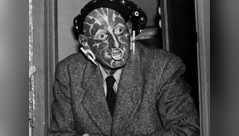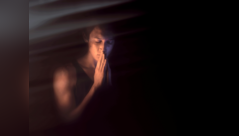01/5In medical terms, it is referred to as postural orthostatic tachycardia syndrome

Do you feel off most of the time? Do you feel light headed and is it accompanied by an increased heart beat rate many times? Does it go away with rest? Does it occur to you frequently? Has the frequency of its occurrence increased recently? If the answer is yes for all these questions then it's time you pay attention to this problem and seek medical help.
02/5What is this condition?


In medical terms, it is referred to as postural orthostatic tachycardia syndrome, or POTS. In this condition the person gets light headed when standing up and usually experiences a faster heart beat. The condition eases when the person sits down or rests.
"In POTS, the lightheadedness or fainting is also accompanied by a rapid increase in heartbeat of more than 30 beats per minute, or a heart rate that exceeds 120 beats per minute, within 10 minutes of rising," says a health report by the US National Institute of Neurological Disorders and Stroke.
The problem is worrisome when a person is standing upright, it goes away during rest or when the person sits down.
03/5What are the symptoms of POTS?


As mentioned earlier, the common symptom of POTS is feeling lightheadedness while standing. But it is not just that, there are several other signs that a person experiences along with this. For example one can experience fatigue, shakiness, brain fog or difficulty concentrating and palpitations along with the main condition.
Many times people also faint under the pressure of the condition.
People having POTS can also have unusual symptoms like headache, bloating, constipation, lack of sleep or insomnia, intolerance to heat and shortness of breath. Due to shortness of breath and fatigue these people can have difficulty in doing intense physical activities like exercising.
There are three different types of POTS: neuropathic POTS, hyperadrenergic POTS and low blood volume POTS.
04/5What causes POTS?


Irrespective of our body position, the heart rate and the blood pressure work in coordination to keep the body functioning properly. But in case of POTS, the heart rate and blood pressure do not coordinate properly and hence they fluctuate affecting the person when he or she is standing upright or doing physical work.
It has also been seen that in women who have POTS, the situation worsens during the menstrual cycle.
05/5Who is at risk?


POTS mostly affects women, and those who are in their menstruation phase and are in pre-menopausal phase.
"Anyone at any age can develop POTS, but the majority of individuals affected (between 75 and 80 percent) are women between the ages of 15 to 50 years of age. Some women report an increase in episodes of POTS right before their menstrual periods. POTS often begins after a pregnancy, major surgery, trauma, or a viral illness," says the report by the US National Institute of Neurological Disorders and Stroke.
This condition can also arise after a severe illness. Experts also say that people with certain autoimmune diseases like celiac disease are more prone to POTS.
Read: Mistakes women should avoid in middle age for a healthier body













































































































closecomments
SIGN IN WITH
GoogleEmail